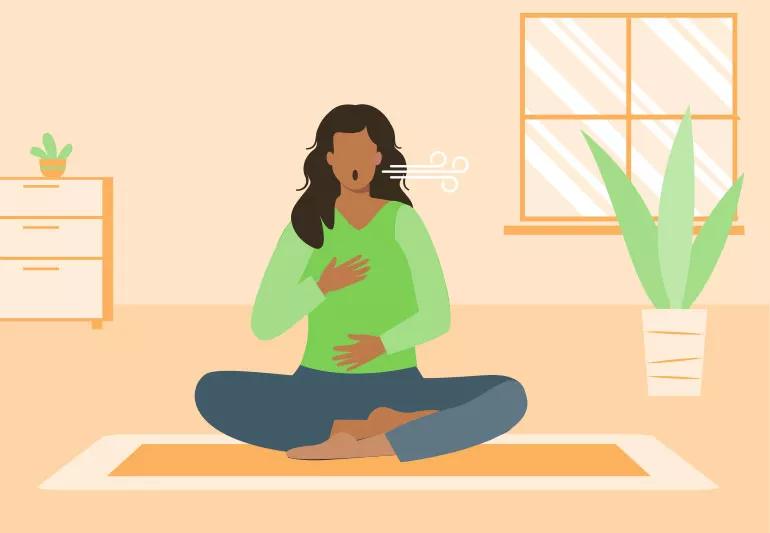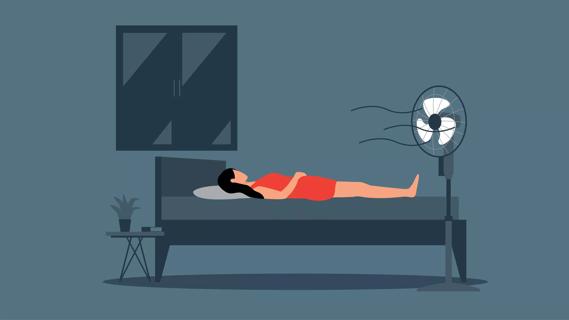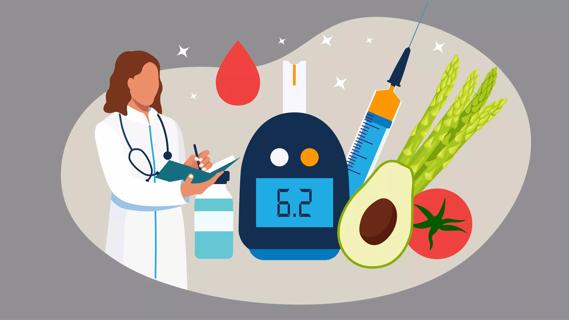Focusing on regulating your breath can help calm your mind

The late Buddhist monk Thích Nhất Hạnh once wrote, “Breathing in, I calm body and mind. Breathing out, I smile. Dwelling in the present moment, I know this is the only moment.”
Cleveland Clinic is a non-profit academic medical center. Advertising on our site helps support our mission. We do not endorse non-Cleveland Clinic products or services. Policy
How incredibly peaceful does that sound? Breathing techniques like 4-7-8 breathing can help you tap into your inner calm, benefitting everything from your stressed-out nervous system to how well you sleep at night.
Integrative medicine specialist Melissa Young, MD, explains how to do this soothing style of breathing and what health benefits it can provide.
The 4-7-8 breathing technique is a style of intentional breathwork that can calm your mind and body. Though popularized in 2015 by integrative medicine specialist Andrew Weil, MD, it has ancient roots in the yogic practice of pranayama, or focusing on the breath.
The gist of it goes like this:
But there’s a little bit more to it if you want to ensure that you’re tapping into all of its health benefits.
“Yoga breathing techniques calm the body down and bring it into a more relaxed state,” Dr. Young explains. “This kind of breathing can help us focus our mind and our body away from worries and repetitive thoughts.”
She goes deeper into what this breathing technique can do for you.
The repetitive nature of 4-7-8 breathing provides a calming distraction to your racing mind. “The counting sequence is a way to focus your mind on something other than your worries,” Dr. Young says.
Your sympathetic nervous system is responsible for your body’s “fight-or-flight” response. When you’re stressed, this system goes into overdrive, which makes you feel amped-up — like a fast-beating heart, shallow breathing and other telltale signs of stress, like sweaty hands and an upset stomach.
Your parasympathetic nervous system is responsible for relaxing your sympathetic nervous system and helping you calm down. “Breathing techniques like 4-7-8 breathing can play a huge role in activating your parasympathetic nervous system and helping you to shift back toward tranquility,” Dr. Young says.
Forget counting sheep and skip right to counting your breath. Calming your mind and reducing your anxiety can go a long way toward a good night’s sleep, and 4-7-8 breathing is associated with both. It’s also been shown to decrease heart rate and blood pressure, which put your body in the right state for sleep.
They say you can’t teach an old dog new tricks, but with practice and repetition, you can teach your nervous system to do some pretty cool things.
“It takes some time for the nervous system to respond to this type of breathwork,” Dr. Young says. “The more we do it, the more we allow our bodies to go into that parasympathetic mode.”
If you regularly practice 4-7-8 breathing (especially during times when you’re not particularly stressed), your body will actually learn to incorporate it into your go-to stress response.
You can do this practice in any position, though Dr. Weil recommends sitting up with your back straight. If you’re using 4-7-8 breathing to help you fall asleep, though, you can even do it while lying in bed.
Here’s how to do it:
Dr. Young warns that when you’re first starting out learning 4-7-8 breathing, you may experience a little bit of lightheadedness or shortness of breath. But this is just a function of learning to breathe more slowly.
“So, many of us just aren’t used to focusing on our breathing,” she says. With a little bit of practice, your body will soon adjust.
Although 4-7-8 breathing is a fairly simple, straightforward technique, it’s a powerful one that can pay off big for your mind, body and spirit. Dr. Young shares some additional insight into making it work for you.
In the beginning, don’t put pressure on yourself to go at a snail’s pace. No one expects you to master your breath on the first try (or even the second or the third or the 20th), so allow yourself to go at whatever pace feels right for your skill level.
As you become more skilled at 4-7-8 breathing, you’ll be able to slow things down for deeper relaxation benefits. “The counting and the ratio of your breath will stay the same, but you can readjust the pace to your comfort,” Dr. Young notes.
Practice makes progress! The more you do 4-7-8 breathing, the better at it you’ll become, and the more your body will begin to incorporate it into your stress response. Dr. Young suggests doing three cycles of this breathing technique twice a day. “You’re going to see results really quickly,” she says.
Identify two recurring moments during your day that you can designate for practicing 4-7-8 breathing. Whether you do it when you wake up, after you get off work or right before you get in bed, setting a time for it can help you to stick with it and adopt it as an ongoing practice.
“Getting into a habit at certain times of the day makes it easier to stay with it,” Dr. Young says. “It doesn’t matter when you do it; it just matters that you actually practice it.”
To hear more on this topic, listen to the Health Essentials Podcast episode, “Breathwork for Beginners.” New episodes of the Health Essentials Podcast publish every Wednesday.
Learn more about our editorial process.

Getting to the root cause of night sweats — like menopause, medication side effects, stress or anxiety — can help you manage them

Research suggests the effect of the supplement, particularly for prostate health, may not deliver believed benefits

Enter relaxation mode by managing your breathing, releasing muscle tension and practicing mindfulness

Thunder, waterfalls and heavy rain — these low-frequency sounds might help cancel out disruptive noises and thoughts

Genetics, metabolism and hormonal fluctuations can all make weight loss more difficult

Identify your triggers, set ground rules for your break and start practicing mindfulness

A diabetes diagnosis, new or long-standing, can trigger reactions like grief, stress, depression and frustration, but symptom relief and help are available

Ask questions, get referrals and consider if someone is a good fit for you and your fitness goals

Your metabolism may torch 1,300 to 2,000 calories daily with no activity

A gentle touch in all the right places may help drain your sinuses